Mark Anthony Neal's Blog, page 1089
April 29, 2011
Saturday Edition: What Barry Bonds Remembers
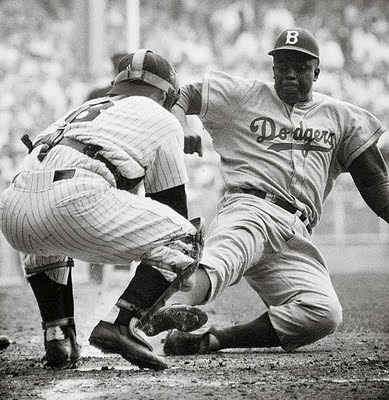 Saturday Edition
Saturday Edition
What Barry Bonds Remembers by Mark Anthony Neal
When Barry Bonds was recently convicted of obstruction of justice, it brought to an end a nearly decade long investigation of Bonds and his use of performance enhancement drugs (PED). Though Bonds is, perhaps, the most notorious of a generation of professional athletes who tried to chemically enhance their longevity on their respective fields of play, there were always elements of the investigation of Bonds, that suggested that there was something more at play.
In a society in which race still matters, the Federal Government's case, in collusion with the popular media's disdain for Bonds (as was the case throughout his career), was never simply about race. Bonds' relative militancy in response to the trial and the legacy that he doggedly pursued throughout his career, were fueled by slights and insults that were remembered from generations earlier.
The conviction of Barry Bonds occurred, ironically, only days before Major League Baseball celebrated the 64th anniversary of Jackie Robinson's famous breaking of the color line in the sport. In far too many minds, Jackie Robinson—a legitimate national hero—is the direct anti-thesis of contemporary professional ball players like Bonds, who are invariably described as selfish, money hungry, and inaccessible. While such descriptions are used to depict many professional athletes, when applied to Black athletes, it takes on added animus. For example, terms like "ungrateful," "arrogant" and "disrespectful" become shorthand for the very idea of the Black athlete, whether directed at Jack Johnson or the Michigan Fab Five.
For several generations of Americans, Robinson was the embodiment of the Black athlete who was grateful for his opportunity to play professional sports; the kind of figure who became a national treasure and an object of nostalgia in the aftermath of the (momentary) radicalization of Black athletes in the 1960s as exemplified by Jim Brown, Lew Alcindor (Kareem Abdul Jabbar), Tommy Smith, John Carlos, and most famously Muhammad Ali (Cassius Clay). As Malcolm X suggested right after a young Cassius Clay won the heavyweight boxing championship, "Cassius Clay is the finest Negro athlete I have known…He is more than Jackie Robinson, because Robinson is the White man's hero."
With the image of Robinson gleefully galloping around the bases or stealing home, cemented in the national memory, few could bear witness to the pressures that he faced, or the ways that he fought back against the indignities that he faced. For a player who was known for stealing home, arguably one of the most difficult individual plays in the sport, in which one must use cunning and guile, it should not be surprising that Robinson might have responded to the racism of the day in ways that went unnoticed by many.
I was reminded of such moments during a recent lecture given by Cornell University Professor Grant Farred, "Stupid Bastards: Jackie Robinson and the Politics of Conciliation" in which he recalled an incident during a spring training game in New Orleans in 1949. The incident was initially covered by writer Roger Kahn in his well-read tome The Boys of Summer. In a nod Robinson's drawing power, the owner of the field in New Orleans, allowed a group of Blacks to watch the game from the stands. Robinson though, was apparently dismayed when Black fans cheered the police officers who allowed them into the stands, shouting: "don't cheer those goddamn bastards. Don't cheer. Keep your fuckin' mouths shut…Don't cheer those bastards, you stupid bastards. Take what you got coming. Don't cheer." (108-109)
To be sure, there were likely many such moments of private tirades by Jackie Robinson, besides the one that Kahn was privy to that day in 1949. Willie Mays, arguably the most popular Black ballplayer of the late 1950s and 1960s, recalls that his own relationship with Robinson was tainted, because the latter felt that Mays needed to be more outspoken about the racist insults that were still directed at Black players well into the 1960s. Robinson was no militant; a moderate Republican by choice, what angered Robinson most was when hard-work and diligence among Blacks was diminished by mainstream culture. Such was the case when Robinson, a second lieutenant in the Army, faced court martial in 1944 for challenging Jim Crow laws in Texas (Fort Hood).
If Mays was not interested, Robinson found an attentive congregation in some of Mays' peers—the generation of Black ball players that emerged after Robinson broke the color line. Players like Hank Aaron, Frank Robinson, Bob Gibson and later Curt Flood—who was largely responsible for the advent of free agency in professional sports, because he resisted being treated as chattel—embodied a generation of Black baseball players whose sense of pride and justice, and willingness to challenge the status quo in the sport, and to a lesser extent the larger society, literally leveled the playing field.
Barry Bonds' sense of this history was more personal; he had the opportunity to witness first hand the frustrated demeanor of his god-father Mays, as his legendary career came to an end and he realized that he would never be feted the way some of his White peers, like Joe DiMaggio, Mickey Mantle and Ted Williams, were. Bonds had an even more intimate view of his father's struggles in the sport (particularly in the absence of Mays' mentoring), as Barry Bonds' skill-set—the quintessential five tool player of the 1970s—eroded in concert with his descent into alcoholism. Barry Bonds never forgave the press for being a source of his father's anxieties and frustrations, which was manifested in his active disdain for the press corps beginning his rookie season with the Pittsburgh Pirates in 1986.
Though he was not particularly close to his father, Bonds' seemed driven to achieve a level of success that his father was unable to sustain. And though his level of achievement seemed to transcend the animus he generated among the journalists who covered him, Bonds seemed to literally shrink in the face of the two-headed muscle-bound homerun machine—Sosa and McGuire—who became the faces of the sport in the late 1990s. Bonds' finely honed skill-set, which made him the logical heir to players like Mays and Mantle before him, was suddenly an afterthought for nation who desired a sport where "they bang(ed) 'em, where they hang(ed) 'em." By all accounts, this is when Bonds' dance with PEDs first began; Bonds making sure that he would not be forgotten.
Bonds and Ken Griffey, Jr.—linked by their like skills as players and fathers who excelled in the sport—were of the last generation of Black players who could remember the era in which the presence of Black players radically transformed the sport. Griffey was not immune to witnessing the slights that came with the racial shifts in the sport; he famously refused to even consider playing for the New York Yankees in response to how Yankee management treated his father. Yet Griffey, who was known throughout his career as "The Kid"--a clear nod to the boyish charm that Mays presented as the "Say Hey Kid—cultivated a much different relationship with the fans and the press corps, in comparison to Bonds.
The reasons why Bonds and Griffey chose to remember those slights and insults and for the vastly different ways that each chose to acknowledge them, remains to be seen. How Griffey processed this all—including the criticisms directed at him late in his career for not living up to the expectations placed on him—is likely locked away in those same little boxes that Jackie Robinson had to pack away his frustration and anger. The mask that Paul Laurence Dunbar surmised about at the end of the 19th century, was the game face that many Black athletes wore at the end of the 20th century. Griffey was as adept as any in this regard.
Griffey could always take comfort in how highly compensated he was, in ways that were unfathomable for Robinson and those first two generations of Black baseball players. Surely Bonds could also take comfort in such trinkets of success, but like that private rant that Roger Kahn captured in New Orleans in 1949, Bonds seemed to always want the fans, the press corps and sport itself, to pay for what he was forced to remember.
***
Mark Anthony Neal is Professor of Black Popular Culture in the Department of African & African American Studies at Duke University. Neal is author of five books, including the forthcoming Looking for Leroy: (Il)Legible Black Masculinities (NYU Press).
Published on April 29, 2011 19:07
Racist Delirium at the French Football Federation
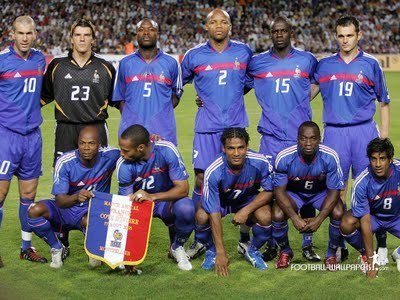
Racist Delirium at the French Football Federation by Laurent Dubois
This afternoon the French blog Mediapart published a stunning report, based on several weeks of investigation, that argues that racist ideas have become normalized, indeed banalized, at the highest levels of the French Football Federation. (You can read an English version of the report here). Mediapart reports that, at the end of 2010, several high-ranking members of the F.F.F. — including the current French national team coach, Laurent Blanc, a veteran of the 1998 World Cup campaign — agreed that it was desirable to decrease the numbers of "black" and "Arab" players in the national training academies. They sent out directives to various academies asking them to intervene — among trainees at the age of 12-13 — to effectively limit the number of players of these backgrounds. While many in France on the left and right have for years declaimed and feared the idea that "quotas" would be put in place in order to carry out what is tellingly called "positive discrimination" (i.e. affirmative action) to help diversify universities and other institutions, it seems the F.F.F. was quite literally discussing, and even starting to put into effect, a "quota" system aimed at making sure there was what they considered the appropriate number of "white" players, who seemed to have been deemed by some generally more tactically intelligent.
Since I read this piece this afternoon, I've been stunned by the skid into delirium this represents. Perhaps I shouldn't be surprised: after all, racist commentary about the French team has a long history, and reached a dangerous peak during the 2010 World Cup fiasco. (In late June of last year, for instance, a small crowd of protestors entered the F.F.F. headquarters, demanding that it create a team that was "white and Christian" by "firing" "blacks and Arabs"). And yet this is nothing short of a powerful form of treason — not only to the principles of equality that supposedly under-gird French political life, but to the principles of sport as well. That many young men who grow up in the French banlieue (suburbs), subject to economic marginalization and various forms of racial and cultural exclusion, have sought to use sport out of an otherwise highly constrained situation is of course logical enough. After all, it is at least ideally one place where social background and connections shouldn't really matter: if you play well on the field, if you score goals, no one can claim you didn't. The French state, meanwhile, has at times strongly supported sports programs in banlieue regions as a way of addressing social issues. And some recruiters for academies explicitly looked to such neighborhoods as they searched for talented young players.
In the last decades, France has produced a string of legendary players: Zinedine Zidane, Thierry Henry, Lilian Thuram, Claude Makelele, Patrick Vieira, Patrice Evra, Florent Malouda, Lassana Diarra, Nicholas Anelka, Samir Nasri, and Karim Benzema — just to name the ones who have played at the pinnacle of the European professional game in England, Italy and Spain. All of these are French citizens, most born in France (though some arrived as young boys in the country with their parents), and have roots in the Caribbean or Africa (including North Africa). Their tactical and technical brilliance is widely recognized and cherished by a series of professional coaches. Many of these players contributed in crucial ways in winning France it's only World Cup victory in 1998 — Thuram and Zidane respectively won the semi-final and final for France in that year. They led the team to a European Cup victory in 2000, and again to the final of the World Cup in 2006.
So it is both nauseating and, frankly, just insane that the French Football Federation — rather than acknowledging and confronting it's own sclerotic institutional culture, which has prevented any significant diversification of it's administrative ranks — is now actually blaming "blacks" and "Arabs" for causing problems for French football. They have skidded into the realm of dangerous fantasy, deeply demeaning themselves and the sport they are supposed to represent.
Read the Full Essay @ Soccer Politics ***
Laurent Dubois is Professor of French Studies and History at Duke University and a leading expert on Haitian history and culture. His books include Soccer Empire: The World Cup and the Future of France (University of California Press, forthcoming spring 2010), Slave Revolution in the Caribbean, 1789-1804: A Brief History With Documents (with John Garrigus; 2006), and Avengers of the New World: The Story of the Haitian Revolution (2004).
Published on April 29, 2011 13:16
April 28, 2011
Some Thoughts on Ivy League Admissions—and Affirmative Action (for Donald Trump)
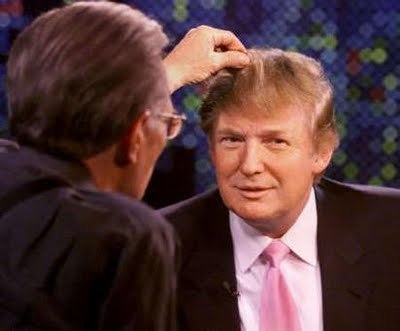
Some Thoughts on Ivy League Admissions & Affirmative Action
(for Donald Trump) by Mark Naison | Fordham University
Donald Trump's comments that Barack Obama didn't have the grades to get into Ivy League Schools shows a profound ignorance of the admissions policies of those institutions. According to Bowen, Shapiro et all who thoroughly researched the admissions policies of elite universities in the US ( and whose conclusions can be found in their 2002 book The Game of Life: College Sports and Educational Values) the greatest admissions advantage at those schools goes not to children of alumni, or underrepresented minorities, but to recruited athletes! Not only are their twice as many recruited athletes as underrepresented minorities at these schools, but the admissions advantage accruing to an athlete, whether male or female, is twice as powerful as those given to a minority or a "legacy."
We are not talking about a small number of students here. At most Ivy League schools, close to 20 percent of the undergraduates are recruited athletes, and at Williams College, they constitute 40 percent of the student population. Given the variety of the sports encompassed, which go from lacrosse, to golf, to tennis to sailing, to soccer, to hockey along with softball, baseball, basketball and football, it turns out that the overwhelming majority of beneficiaries of "sports affirmative action" are white.
Not only are these athletes admitted with significantly lower grades and SAT's than the university mean, but their grades in college tend to be lower than those of their fellow students. Nevertheless, their incomes after college are no lower than those of their fellow students because a large proportion of them go into careers in the financial sector, which go out of their way to recruit "Ivy league athletes" as key components of their work force.
One young woman I worked with, a nationally ranked tennis player who was highly recruited by every Ivy League college, actually got a letter from Harvard telling her that her target SAT score for admission was 1100! Another young man from our community, a highly recruited left handed pitcher, was told that his admission target for Princeton was 1200, with an expected verbal score of 600 because "Princeton has a lot of reading." Needless to say, both of those young people were white!
So much for "undeserving minorities" pushing white kids out of top colleges! To put this in perspective, I have taught African American Studies at Fordham for more than 40 years and talked to hundreds of Black and Latino students about their college recruitment experiences. Not one of them has mentioned being given SAT targets that low for admission to Harvard, Yale or Princeton!
Donald Trump needs to find a new subject for his demagoguery. If Barack Obama got into Columbia with lower grades and SAT's scores than the college mean, he was only one of many students--the vast majority of whom were white--who fell into that category. And his success, along with so many others so admitted, should be a warning that traits measurable on standardized tests are not the only indicators of talent and potential that should be considered for university admission. When Ivy League schools admit students, irrespective of the scores they register on standardized tests, they almost never drop out, and usually achieve professional success after graduation. Whether these schools should have as much power as they do in American society is another question, but none of the students they bring in are programmed to "fail."
Columbia University chose wisely in admitting Barack Obama. His admission was only one small part of a broad policy for creating a student body diverse in talent as well as cultural background from which far more whites than ethnic and racial minorities were beneficiaries.
***
Mark Naison is a Professor of African-American Studies and History at Fordham University and Director of Fordham's Urban Studies Program. He is the author of three books and over 100 articles on African-American History, urban history, and the history of sports. His most recent book is White Boy: A Memoir.
Published on April 28, 2011 16:42
Boxed In: The LeBrons and Stereotypes as Authenticity
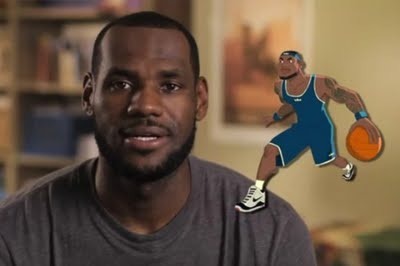
Boxed In: The LeBrons and Stereotypes as Authenticity by David Leonard
The second installation of The LeBrons – "Stay on the Court" – begins just as the initial episode. After the proverbial HP advertisement, LeBron James highlights this week's moral lesson: "There is nothing more important than staying true to who you are." For The LeBrons being authentic and true means "to stay on the court."
The show begins with Athlete LeBron driving kids and his friends to the local recreation center, where they play a little hoop before heading to the pool. Athlete doesn't stay with the boys because he has to "run some drills and get mine," but before leaving imparts some knowledge to them: "remember practices makes perfect."
Heading his advice, the boys remain on the court, until the sight of a young girl leads them off the court and over to the pool, where she happens to be along with many other scantily clad females, whose bodies become a point of emphasis for the gaze of the show.
The rest of the episode revolves around Kid trying to get the attention of Li, the young women who drew the attention of all three boys. Kid, however, has the skills and the mentors to help him. He seeks the advice of both Wise and Biz, who are both depicted as "ladies men." They are typical of "contemporary representations of black males" as "sex-crazed" (Jackson 2006, p. 81). Wise fawns after the younger women at the pool, chasing after them like a lecherous dirty old man as he announces "all these young girls showing skin." Countless girls, who are mesmerized by his charisma, coolness, and sexuality, on the other hand chase Biz.
Unconvinced by Wise's playbook for winning over the ladies, Kid seeks out the advice Biz. He encourages him to impress her with his courage by jumping off a high dive. His plan almost works to perfection only to be pushed aside by a fat hairy man named Yogi giving him "lip to mouth resuscitation." Resulting in the following exchange between Athlete and Kid
Athlete: How as your first kiss?
Kid: Bluck. Come on, athlete, you know that doesn't count. I made a fool of myself. I shouldn't have listened to Biz
Athlete: He wants the best for you. Maybe you should have listened to Wise.
Kid: Right! If I'd listen to him, I'd be married with three kids by now
Athlete: Yo, stay on the court
Kid: You're right; forget about girls. No good at it. I'm good at [as he raises up for a set-hot jumper] this
Athlete: Stay on the court, kid
Kid: I got it, athlete; geez
Athlete: Do you?
As he walks away Li walks toward Kid, telling him, "That was a nice shot. You're a lot better at basketball than you are at diving. How about little 1 on 1?
Li, like Kid, is a baller, showing her skills as she blows right by him to the basket. Importantly, this final exchange reiterates the shows moral lesson about being true to one self and not trying to front. His decision to "keep it real" and "to stay on the court" is why he ultimately gets the girl. The message is powerful because the narrative constructs an authentic black identity through athleticism and sports participation. To keep it real is to stay on the court. His manhood is tied to his game – on the court and with the ladies, which are imagined as mutually reinforcing. In other words, his success results from his staying true to his identity not as diver but as basketball player.
As with the first episode, The LeBrons once again explores the notion of authenticity and "keeping it real," erasing the complexity and "messiness" of identity. "I do think there's something about 'keeping it real' that is about almost flirting with disaster in a certain kind of way. It's about a sort of boldness and a fearlessness that says, 'I'm gonna,' in a sense, 'do me,'" notes John L. Jackson. "I think 'keeping it real' is about saying, 'I'm gonna do what I need to do regardless of how the chips might fall.' I think the irony, of course, is often 'keeping it real' becomes reduced to little more than reproducing the most clichéd stereotypes of blackness, so you're demanding a sense of individualized autonomy, but you're performing it in these very stereotypical ways, in ways that are supposed to mesh with these prefabricated categories of black possibility."
Jackson points to the ways in which hegemonic representations of blackness, as evident here, confine identity to athletic performances. "The extent to which Americans use race as a proxy for athlete ability cannot be overstated," writes Reuben May, in Living through the Hoop . "Many individuals view black athletes as superior to other athletes. . . . The overrepresentation of blacks in sports . . . reinforces the notion of black males as 'natural' athletes" (p. 81). Worse, by focusing on being "true to self" and "staying on the court" The LeBrons further restricts what constitutes an authentic black identity. These narratives scripts are significant given the fact that almost seventy percent of black teenagers see sports as their path to success. The LeBrons embodies a racial project that, according to Thabiti Lewis, defines black masculinity "by athletic or physical prowess" (p. 7).
While focusing on "staying on the court" as it relates to "keeping it real," the show also teaches viewers endless stereotypes. Eric, Kid's friend, is one of the show's few white characters. Not surprisingly, he is described as a "boy genius," with his success on the court attributed to his math and science skills ("the hypotenuse is equal to the distance between the net and the ball"). Eric is able to excel because he stays true to himself – as a stereotypical white nerd, which serves him well as he is able to use principles of geometry and physics to swish a 100+ foot shot (albeit straight up in the air). Whereas Kid is successful because of his skills and talents as a baller (black identity), Eric is buckets because of his whiteness. Eric, however, is not the only stereotype.
Li, "an exchange student from China," who interestingly doesn't have an accent, has "brains coming of her ears." She is a stereotypical exotic temptress in a skimpy bikini, described by one of the boys as a "Shorty" who "got it good." The shows gaze and its slow-motion affects that look her up to down emphasize her body. She is a hot "anime character only she is not a cartoon." In this regard, she is the embodiment of dominant representations of the hypersexual Asian women. While commenting about Lucy Liu and the ways in which her character (Ling) on Alley McBeal recapitulated longstanding stereotypes of Asian women, Darrell Y. Hamamoto, an associate professor in Asian-American Studies from University of California Davis, described her as "a neo-Orientalist masturbatory fantasy figure concocted by a white man whose job it is to satisfy the blocked needs of other white men. . ." (1994, p. 74).
Present within popular culture, pornography, the sex industry, mail-order brides, and sex tourism, hegemonic white racial framing reduces Asian women to exotic sexual bodies ready and willing to serve the sexual fantasies and needs of powerful, virile, western (white) men (Macabasco 2005). Commenting on beauty norms, and the ways in which discourses of diversity and colorblindness erase the consequences and significance of race within our post-civil rights movement, Carrie Smith further elucidates the impact of the hyper visible Asian temptress:
There is also something troubling about the way that people of color are often labeled as "exotic" and categorized separately from Whites – whether it be in lists of the world's most beautiful people or in pornography. The effect of this segregation is that we now have different norms of beauty that are "racialized." People can now pick and choose which racialized norm of beauty most tantalizes them and fulfills their desires.
The representational confinement for Li is representative of the very limited/limiting depictions – scripts – within The LeBrons. "Scripting, like stereotyping, often has deleterious effects. Imagine the child has internalized assumptions about his or her existence and has begin to formulate a sense of self by retaliating against misguided projections," writes Ronald Jackson in Scripting the Masculine Body . "The child is already contemplating achievement possibilities. Now, consider how empowered that child will be if he or she can come to understand the possibilities are limitless, the range of potential is without boundaries. Unfortunately with its scripts, and its narrative focus on authentic identities, limits those possibilities" (p. 100).
The LeBrons, especially as a self-defined pedagogical – message – show, offers powerful lessons about identity and authenticity. In defining blackness through athleticism and athletic/sexual prowess (and Asian femininity through exotic femininity), the show reifies dominant white racial frames. It boxes in black (and Asian) identity defining success through simply staying on the court.
***
David J. Leonard is an associate professor in the Department of Comparative Ethnic Studies at Washington State University at Pullman. His next book (SUNY Press) is on the NBA after the November 2004 brawl during a Pacers-Pistons game at the The Palace of Auburn Hills He has written on sport, video games, film, and social movements, appearing in both popular and academic mediums.
Published on April 28, 2011 16:20
April 26, 2011
AlJazeeraEnglish: Malcolm X: Who was the Man Behind the Legend?
from AlJazeeraEnglish
Malcolm X: Who was the Man Behind the Legend?
Until now: With the publication of a warts and all biography that disturbs the widely accepted story of the Muslim leader's life, including controversial insights to his political contradictions and sexual deviations. Some critics have condemned the book as a twisted biography, others say it is a timely reassessment of African-American history.
On Monday's Riz Khan, we are joined by the book's leading researcher, Zaheer Ali, by Jared Ball, a professor of communication studies at Morgan State University, and by journalist and historian Todd Burroughs.
Published on April 26, 2011 11:24
'Left of Black': Episode #31 featuring Karla FC Holloway
Left of Black #31
w/ Karla FC Holloway
April 25, 2011
Left of Black host and Duke University Professor Mark Anthony Neal is joined by fellow Duke University Professor Karla FC Holloway, author the new book Private Bodies, Public Texts: Race, Gender, and a Cultural Bioethics (Duke University Press). Neal and Holloway discuss medical racism, the Tuskegee experiments and the new biography of Malcolm X.
***
→Karla FC Holloway is James B. Duke Professor of English at Duke University. She also holds appointments in the Law School, Women's Studies and African & African American Studies. Her research and teaching interests focus on African American cultural studies, bicultural studies, gender, ethics and law. Professor Holloway is the author of eight books, including Passed On: African-American Mourning Stories (2002), BookMarks—Reading in Black and White, A Memoir (2006) and the recent Private Bodies, Public Texts: Race, Gender, and a Cultural Bioethics.
***
Left of Black is a weekly Webcast hosted by Mark Anthony Neal and produced in collaboration with the John Hope Franklin Center at Duke University.
Also Available @ iTunes U
Published on April 26, 2011 10:57
April 25, 2011
Malcolmology (Vol. 4) --Leaving the Nation--with Manning Marable
This is the fourth installment of the Malcomology video project, a collaboration between truth2power films and the late Dr. Manning Marable, author of the new Malcolm X biography, Malcolm X: A Life of Reinvention. Visit Dr. Marable's blog at http://detroitred.tumblr.com and truth2power films at http://truth2powerfilms.org/
In this episode, Marable discusses the circumstances that lead to Malcolm x leaving the Nation of Islam.
Published on April 25, 2011 06:14
Film Teaser: Byron Hurt's 'Soul Food Junkies'
Filmmaker Byron Hurt explores the health advantages and disadvantages of Soul Food, a quintessential American cuisine. Soul food will also be used as the lens to investigate the dark side of the food industry and the growing food justice movement that has been born in its wake.
Published on April 25, 2011 05:35
April 24, 2011
Rap Sessions Community Dialogue From Precious II For Colored Girls @ Columbia College | April 26, 2011

Rap Sessions |
Community Dialogue From Precious II For Colored Girls: The Black Image in the American Mind
Columbia CollegeTuesday, April 26th6 p.m. Reception / 6:30 p.m. ProgramConaway Center | 1104 S. Wabash Ave., 1st floorThis event is free and open to the public.
For the fifth year, the Ellen Stone Belic Institute for the Study of Women & Gender in the Arts & Media partners with Rap Sessions: Community Dialogues to bring a distinguished panel of scholars, journalists, and activists for a townhall-style meeting addressing important issues in our communities. Rap Sessions is led by critically-acclaimed journalist, activist, political analyst, and Institute Fellow, Bakari Kitwana.
This year's panel explores contemporary moments in popular culture and political debates where race, image and identity come center stage. Recent films like Precious and For Colored Girls, and TV shows like The Wire and Treme, as well as current political issues such as immigration and others, are among the hot button issues to be addressed in this context.
Featuring:
Elizabeth Méndez Berry (journalist and author of The Obama Generation, Revisited, featured in The Nation)John Jennings (Professor of Visual Studies at SUNY Buffalo, and co-author of Black Comix: African American Independent Comix and Culture)Joan Morgan (journalist, cultural critic, and author of When Chickenheads Come Home to Roost)Mark Anthony Neal (Professor of Black Popular Culture at Duke University, and author of New Black Man)Vijay Prashad (Director of International Studies at Trinity College, and author of The Darker Nations: A People's History of The Third World)Moderated by Bakari Kitwana, journalist, activist, political analyst, and Institute Fellow.
This program is co-presented by the Ellen Stone Belic Institute for the Study of Women and Gender in the Arts and Media, and Rap Sessions. It is sponsored in part by the Leadership Donors of the Institute; Illinois Arts Council, a state agency; Office of Multicultural Affairs; and Critical Encounters: Image & Implication.
For more information, email institutewomengender@colum.edu or call 312.369.8829.
Published on April 24, 2011 17:49
Imani Perry Reviews 'Malcolm X: A Life of Re-Invention'
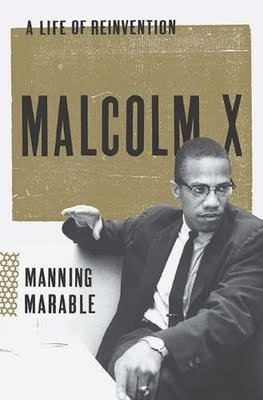
'Malcolm X,' by Manning MarableReview by Imani Perry | Special to The ChronicleSunday, April 24, 2011
In the early 1990s, it was popular for African American teenagers and young adults to wear T-shirts with images of Malcolm X that read, "Our own black shining prince," a reference to Ossie Davis' poignant eulogy of the slain leader. At that time, the embrace of Malcolm X, particularly by young hip-hop fans, seemed a deliberate counterpoint to the sanitized, mainstream and universally celebrated image of Martin Luther King Jr.
Malcolm X was, in our iconic rendering, the unapologetic black radical voice for freedom and justice. He served an important symbolic role for a post-civil rights generation of African Americans who faced the devastating long-term effects of deindustrialization, poverty, educational inequality and mass incarceration.
Now, some 20 years later, with the publication of Manning Marable's "Malcolm X: A Life of Reinvention," the public is being challenged to dismantle the iconography of the "black shining prince" and confront Malcolm X as an incredibly complex and at times deeply conflicted figure.
Impassioned conflicts have arisen over the content of the biography. Salacious interest in whether Malcolm had homosexual encounters; whether he and his wife, Betty, were unfaithful to each other; whether he and Alex Haley misrepresented his story in "The Autobiography of Malcolm X"; and whether the convicted parties were actually the ones responsible for his murder have been matched with outrage at the manner in which Marable unflinchingly presents Malcolm X as a fallible human being.
Marable's death, just a few days before his book's release, feels like a last gasp of herculean effort, a final, noble offering from a path-breaking historian and political scientist. While the author's absence facilitates some of the melodramatic reaction to his magnum opus, we are forced to defend or decry without his input.
But in truth, although the conflict over the content has probably driven sales and attention to the book, the brilliance of this biography has little if anything to do with its apparently shocking revelations. Marable has crafted an extraordinary portrait of a man and his time. Malcolm moves through the social and intellectual history of mid-20th century black America, and his periods of growth and stagnation mirror the tides of black life.
Read the Full Review @ The San Francisco Chronicle
***
Imani Perry is a professor at the Center for African American Studies at Princeton University.
Published on April 24, 2011 15:03
Mark Anthony Neal's Blog
- Mark Anthony Neal's profile
- 30 followers
Mark Anthony Neal isn't a Goodreads Author
(yet),
but they
do have a blog,
so here are some recent posts imported from
their feed.



